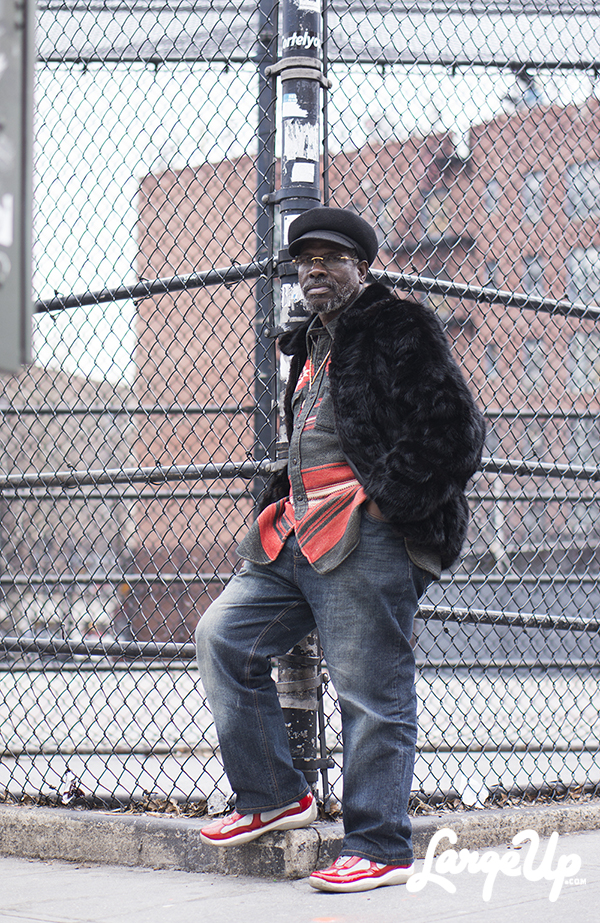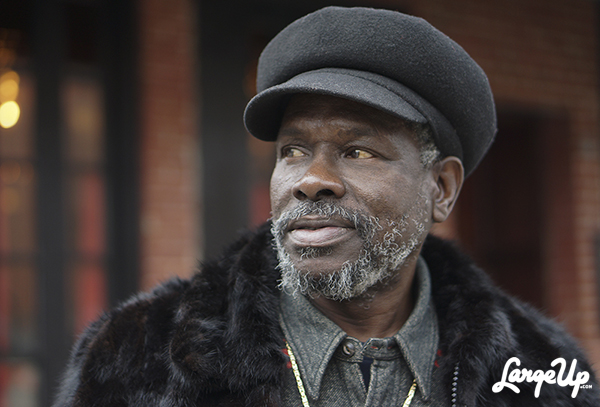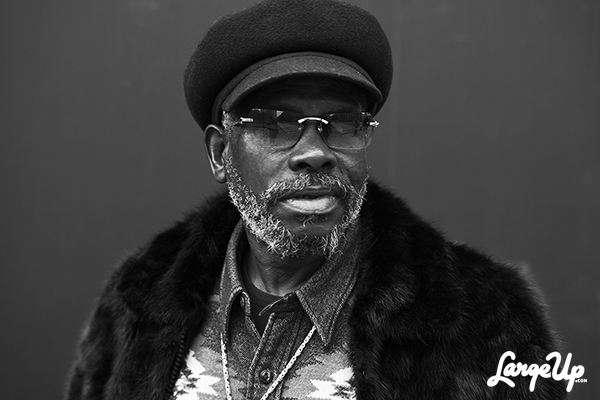LU: When you went back to Jamaica, did you feel out of touch with the music scene at first?
JO: No, because as long as I was in Canada, my heart was still in Jamaica and my mind was on the music. I was storing things in my cranium so when I go back I can unleash them. When I go back in 1979, I just went to Studio One because that was where I wanted to do some recording more than anyplace. That’s where I did a song “Water More than Flour” and start doing a few more. I did a few songs then I started doing the album Truth and Rights.
LU: What was the process to get into Studio One?
JO: I had been trying that for years but the people doing the audition… there was so much people every Sunday. The crowd big, and by the time they get round to me, it finish. Next week, Sunday, the place full. [I’d] ry and try and try every Sunday for years, it never work out. Being that I already recorded Come Back Darling from 1969, and I made my mark, when I come back, I go back to Mr. Dodd and him remember the voice. I say mi just come back from Canada, mi haffi do something at Studio One. So I went and get some old tapes with dust on them and dust them off and pick out mi riddim and start singing. That’s how we pick out dem riddims on the Truths and Rights album.
LU: How long did it take being back into Jamaica before your tunes were being played at dances?
JO: What really happen, I make one named “Water More than Flour.” Meanwhile, while making dem Studio One tings, I was still over [at King] Jammys. I was making music at more than one place. I was making an album at Jammys, Folly Ranking. During that period [I’d] try and make as much music as [I] can make. When mi hear riddim and love riddim mi just make it. I was doing Folly Ranking for Jammys, and then Junjo Lawes heard me and he loved the song “Folly Ranking,” so he wanted a lovers rock that would sound ram. He wanted a lovers version of “Folly Ranking,” so mi just mek “Fally Lover.” So I had one for Jammy’s called Folly Ranking and Junjo Lawes’ lovers version. And then I was still working at Studio One, and did “Ice Cream Love” with Junjo. Then right away dem start giving back Johnny on this sound, so my tune will play upon the sound. And Junjo had Volcano Sound, mi tune a play upon the sound. Right away mi start to step up pon dem.
LU: What was the first point you knew you had a big hit tune that could kill any crowd?
JO: Like 1980. Mi come back to Jamaica from 1979 and 1980, mi ready fi dem. Everything mi touch ah like gold. “Folly Ranking,” “Ice Cream Love”…
LU: You have a different lyrical style with each of those producers. With Roots Radics it’s more mystical, slower, not as much party songs.
JO: The riddim have a mood. So the mood of the riddim give me that mi work with
LU: Is it accurate to say that you are the original dancehall artist?
JO: I don’t want to say I am the original but one of the originals of the dancehall artists. Maybe [there are] other dancehall godfather[s] but mi di original dancehall godfather because when mi say dancehall… in my young days there wasn’t TV around really, we have mostly sound system, if you ah watch a movie you go ah cinema. The dancehall is a ting where a whole heap of tings aren’t going on, dem just play the music.
LU: You’re referring to dancehall as a place not as a genre…
JO: It’s a destination where like in your youth you [would] go to movies on 42nd Street. But remember most times we can’t even afford the movies. We can go outside of the dancehall and stand there for free and listen to the music. So the dancehall wasn’t a genre of music. Dancehall was a place where you go.
LU: You are known for studio songs that reflect the culture of dancehall, the place. “Rewind,” “Dubplate Playing (In the Ghetto Tonight).” Can you give us a play by play? After you voiced for Jammys, the concept of dubplates changed. Is that accurate?
JO: Yeah, because sometime me and Jammys, if I have a song and I want to give it a test run, we just go in the dub studio, record it as a dub and play it at the dance tonight. Nobody else have it, the crowd react to it, we come back to the drawing board, take out the sound’s name, and finish writing. And have it [because] the people dem already feeling the song. To record for Junjo and Jammys at the time was kind of important at the time because dem have sounds that play out. So that was a testing area. We get a likkle idea on the riddim and we just test it out when the sound played, and [if] the people react to it we know sum’n can go on. So we just go back and fix it up now, take out the sound [references]. So now we have a song and the people love it. The sound system [would ] want a special cut for themselves. And then Jammys is the producer and him have a sound. He might get a special cut for him sound before anyone else get it.
LU: Where did the chant in “Budy Bye” come from? What is the original lyrics?
JO: It’s “put it by number one.” Put it by.
LU: So “put it by” became “Budy Bye”. Meaning make this the No. 1 song. And then people sang it back to you or you did it so fast that’s what they heard?
JO: It sounded like “Budy Bye.”
LU: I heard you actually recorded that in New York. Is that right?
JO: I think the studio is Quad. On 42nd Street? A lot of people thought it was recorded in Jamaica.
LU: 47th. That’s where 2Pac got shot, where you did “Budy Bye.” But it was for Jammy’s?
JO: It go for Tad’s. It’s a Jammy’s riddim. Tad’s bought a cut off of Jammy’s. The rest of the story and history or mystery between Tad’s and Jammy’s. Dem supposed to know about the history. Or mystery.
Read on for Part 3, as Johnny talks Major Lazer and why “the old school mixed with the new school” is still his rule.







